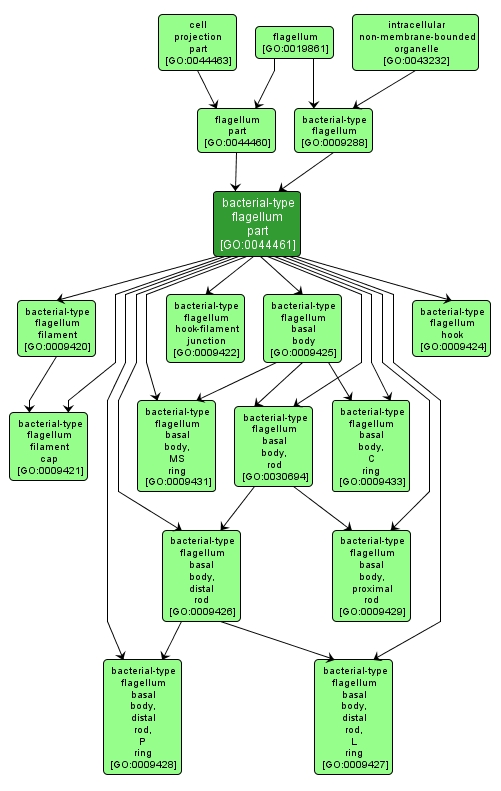GO TERM SUMMARY
|
| Name: |
bacterial-type flagellum part |
| Acc: |
GO:0044461 |
| Aspect: |
Cellular Component |
| Desc: |
Any constituent part of flagellum, a 20 nm diameter filament composed of subunits of flagellin driven passively at its base by a motor powered by the transmembrane proton potential. Examples of this component are found in bacterial species. |
Synonyms:
- flagellin-based flagellum part
|
|

|
INTERACTIVE GO GRAPH
|














